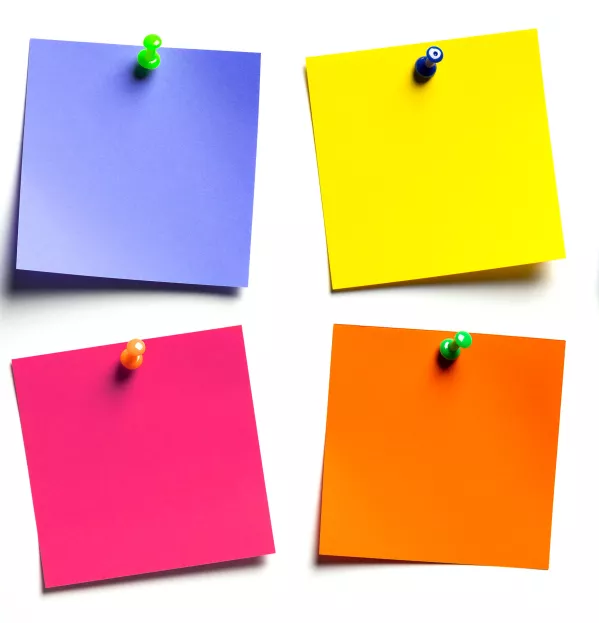- Home
- Teaching & Learning
- Primary
- Why your classroom needs a whole-class task board
Why your classroom needs a whole-class task board

Task boards have long been used to support children with special educational needs and disabilities (SEND) in their learning.
These boards vary in design. Some include a simple list of the steps a pupil needs to complete in order to finish a task, while others include more detail: how long a pupil has to complete a task, what equipment is needed, what reward they might get for completing it.
While individual task boards are a useful tool for many children, they take time to embed and adult support to run. This can be an issue in a classroom where you have just one adult but several children who have task boards on their provision plans.
What is a whole-class task board?
One solution is to use a whole-class task board, which can be projected on to a whiteboard or written on a flipchart. This replicates what is on the individual task board but makes the information available to everyone in class.
There are many benefits to using a whole-class task board. For one, it can reduce cognitive load for all pupils: when there are clear instructions about how to complete a task, pupils will be more able to engage with new knowledge.
A whole-class task board also distils teaching into key points, or an activity into its component steps, and this can be really helpful for pupils who might struggle to follow a lot of teacher talk. It can also reduce anxiety because it offers a clear framework for what is happening now, and what needs to happen next.
In addition, the board can support teaching. If a class is finding a concept especially tricky, you can work through the steps on the task board together. This explicit modelling will develop pupils’ understanding of how a task board works, and show them why being able to break a task down into its component steps is a useful skill.
If this all sounds worthwhile - and, trust me, it is - how do you go about creating and introducing a whole-class task board to your lessons?
How to create a task board
What your task board looks like will depend on the age of your pupils. While older children might be more able to follow a list of instructions, younger children may need visuals. These could include Widgit symbols, pictures or photographs of what pupils need to do.

If pupils are working in groups during the lesson, you can use your task board to help structure this with individual photographs of children and adults labelled with their allocated groups, so that everyone knows where they need to be and who is doing what.
Creating a virtual task board on a PowerPoint slide is a great option because this means you can incorporate a timer to count down how much time is left for each step.
Read more:
- How to create self-motivated learners
- Why workstations will transform your classroom
- How playground “zones” have transformed school break times
While a whole-class task board is designed to support everyone, if there are some pupils who need additional help, you can take a more personalised approach by printing off a copy of the task board prior to the lesson or taking a picture of the flipchart on an iPad for a child to have on their desk. This allows them to tick steps off as they go along.
For pupils who might be reluctant to engage with task boards - because they make them feel “different” - this approach allows them to feel included (because everyone is using the task board) while still giving them additional scaffolding.
There’s also the option for an adult to give them extra support, too, if needed.
Supporting independent learning
The task board approach might seem a bit too much like “spoon feeding” but the goal is always to move pupils towards being able to follow instructions without adult support. For example, copies of the task board that you create for individual pupils can be kept together for them to refer back to and use as a resource, promoting independent learning skills.
In addition, if you use a similar task board format when giving instructions for homework, you ensure a crossover between home and school, and encourage pupils to practise using task board skills independently. This helps to prepare them for self-study, as they progress through their school career.
I am forever making lists and taking notes in my daily life. It’s part of how I organise myself. I see a task board as a first step towards giving pupils these key organisational skills.
Whether whole-class or individual, task boards are important stepping stones. The more we can model to children how to effectively break down knowledge and work through it independently, the more successful they will be, later on, when they need to draw on those skills for themselves.
Leyla Gambell is a former primary school assistant headteacher and Sendco who now works in a secondary school
Register with Tes and you can read two free articles every month plus you'll have access to our range of award-winning newsletters.
Keep reading with our special offer!
You’ve reached your limit of free articles this month.
- Unlimited access to all Tes magazine content
- Save your favourite articles and gift them to your colleagues
- Exclusive subscriber-only stories
- Over 200,000 archived articles
- Unlimited access to all Tes magazine content
- Save your favourite articles and gift them to your colleagues
- Exclusive subscriber-only stories
- Over 200,000 archived articles
topics in this article



